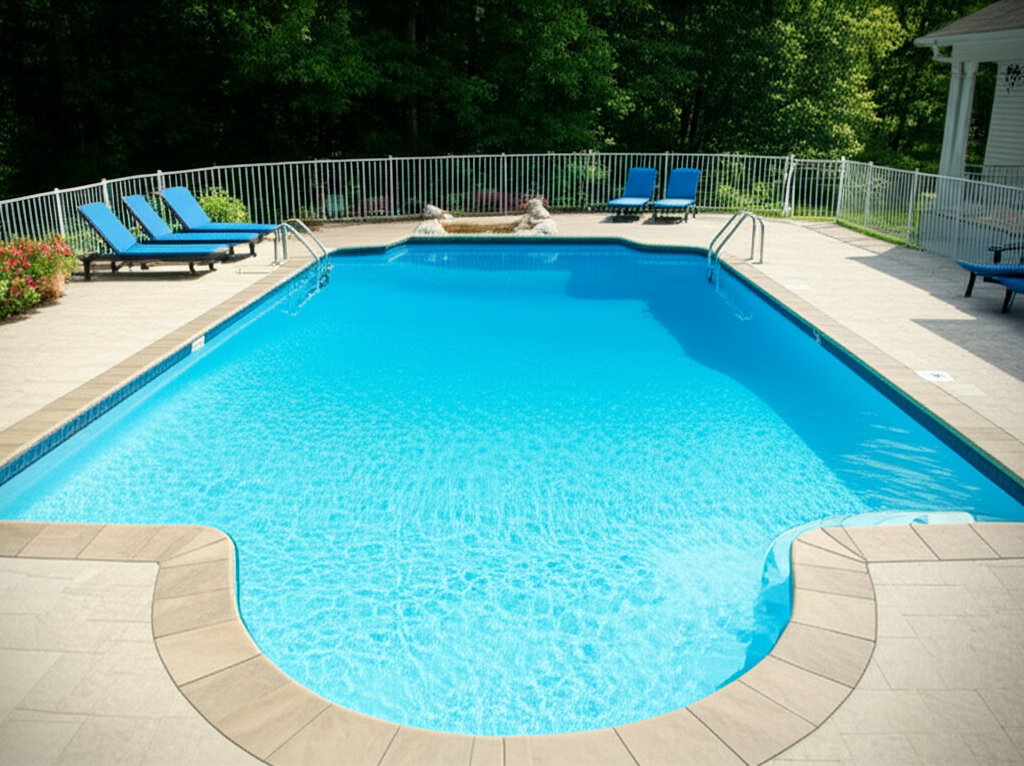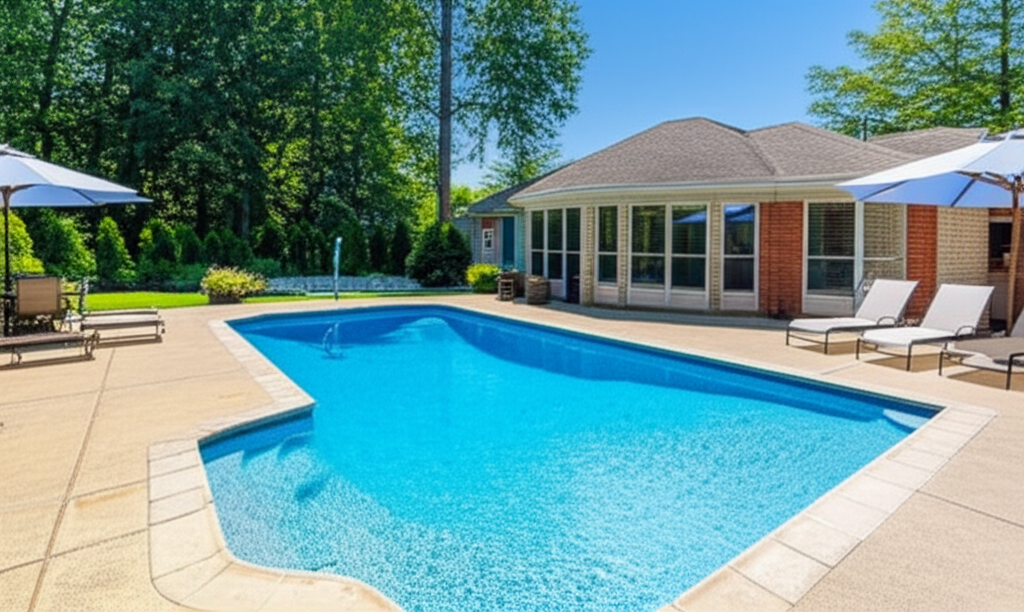- Understanding the Scope of Pool Liability
- How Homeowners Insurance Addresses Pool Liability
- Key Factors Affecting Your Coverage Needs
- Bolstering Your Protection: Beyond Standard Limits
- Increasing Personal Liability Limits
- Umbrella Insurance: An Essential Layer of Defense
- Proactive Steps to Minimize Pool Liability Risks
- Reviewing Your Homeowners Insurance Policy Regularly
Pool Liability is a critical consideration for any homeowner fortunate enough to have a swimming pool. While a pool offers endless enjoyment and a perfect escape from the summer heat, it also introduces significant risks that require careful attention to your homeowners insurance policy. Understanding these potential liabilities and ensuring you have adequate coverage isn’t just a recommendation; it’s an essential safeguard for your financial well-being and peace of mind.
Understanding the Scope of Pool Liability
Owning a swimming pool inherently increases the risk of accidents, injuries, and even fatalities on your property. These incidents can lead to substantial financial claims against you, the homeowner. Pool liability typically refers to your legal responsibility for such occurrences, whether they involve invited guests, trespassers, or even contractors working on your pool.
One of the key legal concepts associated with pools is the “attractive nuisance” doctrine. This legal principle generally holds homeowners responsible for injuries to children who trespass on their property if the dangerous condition (like an unfenced pool) is likely to attract them. Even if someone enters your property without permission, you may still be held accountable if proper safety measures were not in place. Injuries can range from minor cuts and scrapes to severe spinal injuries, brain damage, or drowning, all of which can result in costly medical bills, extensive rehabilitation, and potentially lawsuits for pain and suffering.
How Homeowners Insurance Addresses Pool Liability
Your homeowners insurance policy is designed to protect you from various financial risks associated with owning a home, and this typically includes liability coverage for your pool.
1. Personal Liability Coverage: This is the cornerstone of your protection. It covers legal expenses, medical bills, and any damages you’re found liable for if someone is injured on your property, including in or around your swimming pool. Most standard homeowners policies offer a base level of liability coverage, often starting around $100,000 to $300,000. However, for pool owners, this amount may not be sufficient given the potential severity of pool-related accidents.
2. Medical Payments Coverage: This component of your policy pays for smaller medical expenses if someone is injured on your property, regardless of who is at fault. It functions more as a goodwill gesture, often covering things like an urgent care visit for a minor cut without requiring a full liability claim. The limits for medical payments are typically much lower than personal liability, ranging from $1,000 to $10,000.
It’s crucial to review your policy details carefully. While standard policies often cover pool liability, there might be specific exclusions. For instance, some policies may have higher deductibles or specific requirements if you have a diving board or slide. It’s also important to note that liability coverage generally does not extend to injuries sustained by the policyholder or their immediate family members living in the home.
Key Factors Affecting Your Coverage Needs
Several factors can influence the level of pool liability risk you face and, consequently, the amount of insurance coverage you need:
Type of Pool: In-ground pools are generally considered a higher risk than above-ground pools due to their permanence and often greater depth. Portable or inflatable pools typically pose less risk but still warrant attention.
Safety Features: The presence and effectiveness of safety features like secure fences with self-latching gates, pool alarms (on gates, doors, or the pool surface), safety covers, and anti-entrapment drain covers significantly reduce risk and can influence your insurer’s perception.
Diving Boards and Slides: These additions amplify the risk of severe injuries and may require higher liability limits or even special endorsements on your policy.
Local Regulations: Many municipalities have strict regulations regarding pool safety, such as mandatory fencing heights or alarm requirements. Non-compliance can not only lead to fines but could also complicate an insurance claim.
Usage: How often your pool is used, by whom, and whether you host large gatherings can also play a role in your overall risk profile.
Bolstering Your Protection: Beyond Standard Limits
Given the potentially catastrophic costs associated with severe pool injuries, many pool owners find that the standard personal liability limits offered by their homeowners policy are inadequate.
Increasing Personal Liability Limits
The simplest step is to increase your personal liability coverage within your existing homeowners policy. Most insurers allow you to raise limits to $500,000 or even $1 million. While this will marginally increase your premium, the added protection is often well worth the cost.
Umbrella Insurance: An Essential Layer of Defense
For comprehensive protection, an umbrella insurance policy is highly recommended for all pool owners. This type of policy provides an additional layer of liability coverage above and beyond the limits of your homeowners and auto insurance policies. Typically offering coverage in increments of $1 million, umbrella policies are surprisingly affordable relative to the vast amount of protection they provide. If a pool-related incident results in a judgment against you that exceeds your homeowners policy’s liability limits, your umbrella policy kicks in to cover the remaining costs, potentially saving you from financial ruin.
Proactive Steps to Minimize Pool Liability Risks
While robust insurance coverage is vital, prevention is always the best defense. Implementing strong safety measures not only reduces the chance of an accident but can also work in your favor if an insurance claim is ever made.
Secure Fencing: Install a climb-resistant fence (at least 4 feet high, often 5 feet required by code) with self-closing, self-latching gates that open outward.
Lock All Access Points: Ensure all gates are locked when the pool is not in use. Consider door alarms on any doors leading directly from the house to the pool area.
Pool Alarms: Use a surface alarm that detects disturbances in the water or a gate alarm that sounds when opened.
Pool Covers: Use a sturdy, safety-rated pool cover when the pool is not in use.
Strict Pool Rules: Establish clear rules for pool use and enforce them rigorously, especially for children. Never allow unsupervised swimming.
Emergency Preparedness: Have emergency equipment readily accessible (life preservers, shepherd’s crooks) and ensure adults know CPR and basic first aid.
Regular Maintenance: Keep your pool area tidy, free of tripping hazards, and ensure all equipment is in good working order.
Reviewing Your Homeowners Insurance Policy Regularly
The acquisition of a swimming pool is a significant addition to your home that absolutely warrants a review of your homeowners insurance policy. Do not assume your existing coverage is sufficient. Inform your insurance agent as soon as you install a pool or consider buying a home with one. They can help you understand your current coverage, identify any gaps, and recommend appropriate adjustments, such as increasing liability limits or purchasing an umbrella policy.
Regularly reviewing your policy, especially as your life circumstances or property changes, ensures that your coverage remains adequate. Understanding your pool liability and taking proactive steps to both insure and secure your pool will allow you and your family to enjoy your aquatic oasis with true peace of mind.




